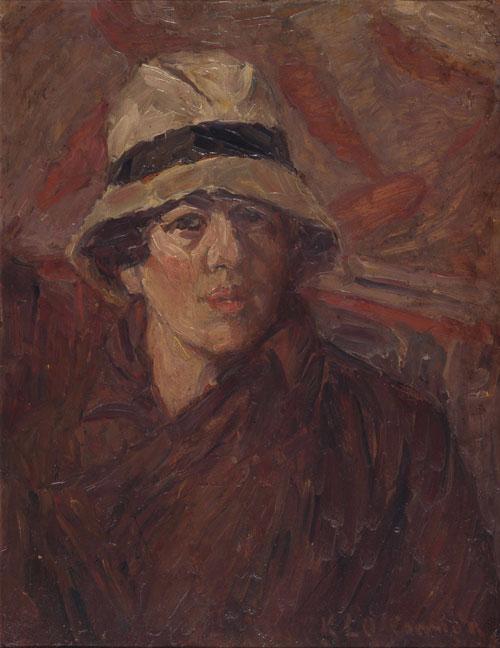.jpg)
This is the fourth issue on feminism, art and gender in Artlink’s thirty-six years of publishing. The very first issue of Artlink published in March 1981 had a focus on feminism and art history, including a feature essay by Jude Adams “Heidelberg: Waiting and Hoping” taking to task outdated views on nationalism, masculinity and the Australian landscape. It also included a promotion for The Lovely Motherhood Show opening at the Experimental Art Foundation and an introduction to the Adelaide working group of the Women’s Art Movement.
For many years Artlink featured a column on the Women’s Art Movement, and in 1984 Jane Kent and Anne Marsh guest‑edited Feminist Perspectives, well before the introduction of our regular themed issues. This edition included reports on Indigenous women’s actions, independent filmmaking, political performance, and critical agendas in community arts and arts in working life programs, setting the bar high for Artlink to embrace more radical agendas. By the second feminist issue, Art & the Feminist Project (14:1) published in 1994, Artlink had evolved into a full‑colour quarterly magazine, with reviews coverage and commentary from all states and territories, while also expanding into the region with profiles on women’s art from New Zealand and The Philippines. Artlink’s third feminist issue Sexing the Agenda (33:3) published in 2013, guest-edited by Bec Dean and Joanna Mendelssohn, provided an update on achievements and an historical overview, while broadening the remit to take a more gender‑diverse approach through a focus on the transgressive body and performance art.
This focus on critical practices aligned with feminism is not constrained by the single-focus issue and is grafted onto a host of regular concerns across Artlink’s quarterly themed editions, including the commitment to diversity thinking, ecological and environmental concerns, borders, bio-ethics and the post-human subject. Marking a point in time, captured by a groundswell of recent and forthcoming exhibitions, conferences, clusters of research and practice, this latest issue picks up on where the previous editions left off, responding to the historical legacies, inter-generational and culturally diverse perspectives that position debates around feminism now. Taking the lead, Anne Marsh’s magnificent sweep of an overview essay, first presented as keynote at the Feminist Art Renewal Network (FRAN) festival symposium in Adelaide, surveys Australian feminist art as political activism, cultural work and theory over five decades.
As the title of the forthcoming mega-exhibition at the Australian Centre for Contemporary Art attests, feminism is “Unfinished Business”[1] as a progressive force for social change. It is clear that we need to expand the view of feminism as largely confined to a white, middle-class, heterosexual women’s world. What are the gains, and what is still to be achieved beyond a degree of equality based on market choices, individual careers and (for some) a degree of material success? As Marsh provocatively suggests in her essay and ARC Discovery Project, Doing Feminism/Sharing The World, that concludes with a symposium in February,[2] it is in “the doing” (rather than essentialist models of “being”) that real power resides, thinking through the tasks of political activism, cultural work and theory.
The various essays and artist profiles in this issue, allude to such located models of thought and practice. Gemma Weston’s case study on “Gender equality in the museum,” profiling The Cruthers Collection of Women’s Art, responds to the current scramble within the international museum world to supplement collections with acquisitions of women’s art. Ann Finegan’s interest in performance and role-play was inspired by the challenge of Julian Rosefeldt’s Manifesto (2014–15) to rejig the master statements of leading twentieth-century political and art movements by switching the gender and speaking position. Courtney Coombs takes on those awkward conversations to write on queer feminism and intersectionality, and Sasha Grbich channels environmental ethics and “radical care” on a field trip in West Auckland as part of HEAT: Solar Revolutions at Te Uru, Waitakere Contemporary.
Across the various practices and positions profiled in this issue, it is self‑evident that we live in a gendered world. Figuring or embodying the experience of women’s lives remains a crucial motivation for art as demonstrated in a key work by Sera Waters from her exhibition Domestic Arts at ACE Open reproduced on the cover. Miriam Kelly’s thoughtful catalogue essay, reprinted in this issue, contextualises Water’s personal history as the product of a white Australian settler culture. Here the flat bed approach to painting and the uncanny replication of the prone figure in pixelated digital form doubles the hexagon‑pattern of a traditional quilt, contributing to the ongoing feminist legacy of the subversive stitch. Made from old fabric remnants, this remarkable work of craft revivalism bares the trace of the real body in the faded and stained variations of colour and texture. Nothing says more about the struggle to position the subject of history than an anonymous figure posed in foetal position on her bed channelling multiple generations.
Footnotes
- ^ Unfinished Business, Perspectives on art and feminism, Australian Centre for Contemporary Art, Melbourne (15 December 2017 – 25 March 2018): http://acca.melbourne.
- ^ Doing Feminism/Sharing The World is an artist-in-residence program at the Norma Redpath House, University of Melbourne (1 December 2017 – 25 February 2018), with a symposium on 22–23 February 2018: www.wafa.net.au.










